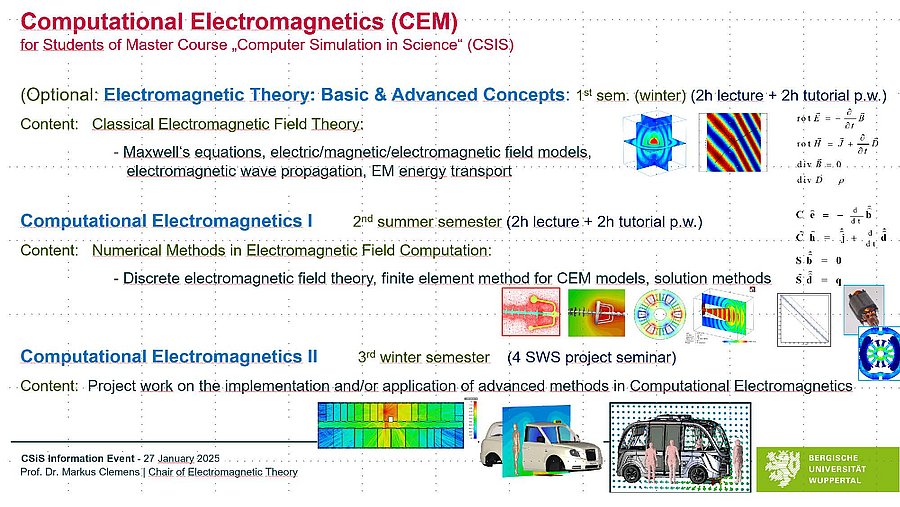
Computational Electromagnetics focuses on the computer-aided simulation of electromagnetic field distributions and additional multi-physically coupled field effects in complex technological and biological systems. Usual applications involve the simulation of complex energy transport and conversion systems in power engineering as well as realistic 3D simulations of complicated electromagnetic compatibility problems e.g. in automotive engineering (especially for novel electric-drive automobiles) or numerical electro-magnetic field dosimetric testing with high resolution models of biological organisms. This requires the mathematical modeling of the electromagnetic field problems with the Maxwell equations, a set of partial derivative equations, which describe all macroscopic electromagnetic phenomena, and their discretization into discrete formulations suitable for computational numerical solutions. This also involves geometric discretization schemes such as e.g. the Finite Integration Technique or the Whitney Finite Element Method which directly reformulate the Maxwell equations into a set of matrix equations. These so called Maxwell-Grid-Equations allow to formulate a fully computer compatible discrete electromagnetic field theory. The computer implementation of the usually large sparse algebraic, differential algebraic or ordinary differential systems of equations resulting from these discretization techniques requires advanced numerical solution techniques. This includes solution techniques for large systems of ordinary and partial differential equations and also relies on modern methods of numerical linear algebra. Efficient techniques will be addressed involving also aspects of hardware oriented programming.
Last modified: 20.07.2024
